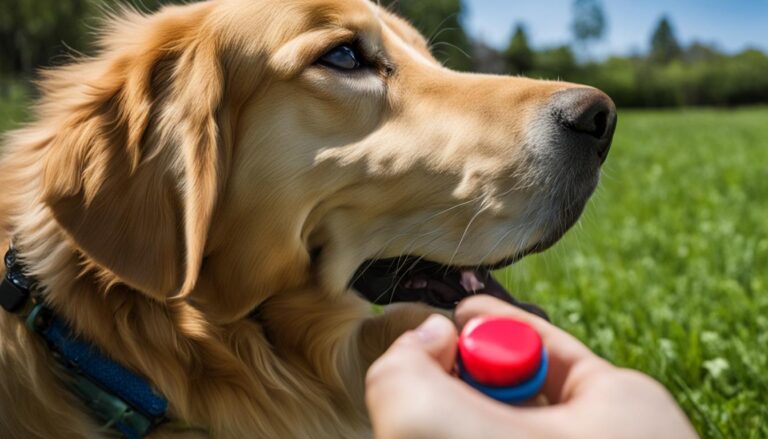How to Train a Dog to Be Quiet
Do you have a dog that just can’t seem to stay quiet? Whether it’s incessant barking at the doorbell or non-stop yapping in the backyard, excessive barking can be frustrating for both you and your neighbors. But don’t worry, because we’ve got you covered! In this article, we’ll show you how to train a dog to be quiet through a step-by-step process that will have your furry friend obeying the quiet command in no time.
But first, let me share a story. Picture this: it’s a beautiful sunny day, and you’re sitting in your backyard, enjoying a peaceful moment of relaxation. Suddenly, your dog starts barking like there’s no tomorrow. You try to calm them down, but they just won’t listen. What started as a serene afternoon quickly turns into a noisy mess.
Teaching your Dog to Bark on Command
To train your dog to bark on command, you can follow a simple and effective process. Here’s how to teach your dog to bark on command:
- Start by identifying what triggers your dog to bark, such as a doorbell or a knock on the door.
- Open the door slightly and create the trigger. As your dog starts barking, stand between them and the door and give the command “Speak” while using a distinctive hand signal.
- Give them a treat while they are barking, but avoid praising them to ensure they associate the treat with the command rather than the barking itself.
- Repeat this process multiple times until your dog can bark on command with just a verbal cue and hand signal.
Remember to be patient and consistent with your training. Every dog is unique, so it may take some time for them to fully grasp the command. With practice and positive reinforcement, your dog will learn to bark on command.
Once your dog has mastered barking on command, you can then move on to the next step of training – teaching them to be quiet on cue. This will help you maintain control over their barking behavior in various situations. Continue reading the next section to learn more about training your dog to be quiet.
https://www.youtube.com/watch?v=_EdCPhfdeNs
Tips for Success
- Choose a specific command word or phrase, such as “Speak” or “Bark,” and use it consistently during training.
- Pair the verbal command with a distinct hand signal to reinforce the association between the command and the action.
- Have treats ready to immediately reward your dog when they bark on command.
- Avoid using praise during the barking phase of the training to prevent confusion with the reward signal.
- Practice the training sessions in a controlled environment with minimal distractions, gradually increasing the difficulty as your dog progresses.
Training the “Quiet” Command
Once your dog has learned to bark on command, it’s time to tackle training them to be quiet on cue. Teaching your dog the “Quiet” command is essential for curbing excessive barking and promoting good behavior. Follow these steps to effectively train your dog to be quiet:
- Using a calm and firm voice: When your dog starts barking on command, use a calm and firm voice to give them the command “Quiet.” This helps establish your authority and communicate clearly with your dog.
- Waiting for silence: Wait for your dog to stop barking before rewarding them with a treat. This teaches them that staying quiet leads to positive reinforcement.
- Increasing duration of silence: Gradually increase the duration of silence before giving the treat. Start with a few seconds of quiet and gradually extend the time. This encourages your dog to remain quiet for longer periods.
- Consistent reinforcement: Repeat this process several times a day for about a week to reinforce the “Quiet” command. Consistency is key in dog training, so be patient and stay committed to the process.
With practice and consistency, your dog will learn to respond to the “Quiet” command and stop barking on cue. Remember to use positive reinforcement, such as treats and praise, to reward your dog for their good behavior.
Outdoor Barking
Some dogs tend to bark excessively when outside in the yard. Controlling outdoor barking can be challenging since you are not always present to reward or punish the behavior. However, there are techniques and tools that can help in training your dog to be quiet outdoors.
One technique you can try is teaching your dog to come inside when they hear a whistle. This can help cut short barking episodes and redirect their attention to a different behavior. Start by associating the sound of the whistle with a treat. Every time you blow the whistle, reward your dog with a treat and praise when they come inside. With consistent training, your dog will learn to associate the whistle with coming inside and quieting down.
Another option to consider is using a citronella bark collar. These collars emit a burst of citronella spray when the dog barks, which can effectively deter barking without causing harm or pain to the dog. The scent of citronella is unpleasant to dogs and can interrupt their barking behavior. It’s important to note that citronella bark collars are not suitable for dogs with anxiety-based barking. Always follow the instructions provided by the manufacturer when using a bark collar and consult with a professional trainer if needed.

Practicing Dog Training Cues
To increase the success rate of training, it is essential to regularly practice both the “speak” and “quiet” commands. Make the training sessions fun and engaging for your dog. If your dog doesn’t enjoy learning to speak, you can move on to practicing other dog training cues that both you and your dog find enjoyable. It is crucial not to reward your dog for constant barking as a means to request treats. Reward them for barking only when you have asked them to speak and ignore any unsolicited barking.
Consistency is key when practicing dog training cues. Ensure that you allocate dedicated time for training sessions each day. By following a consistent routine, you can reinforce the commands and help your dog understand the desired behaviors.
Reinforcing Dog Training Commands
Reinforce the training progress by using positive reinforcement techniques. Consistently reward your dog with treats, praise, or playtime when they successfully execute the “speak” and “quiet” commands. Reinforcing their understanding of these cues will encourage them to continue performing the desired behaviors in the future.
It is also important to avoid any negative reinforcement or punishment during training. Reward-based training methods have proven to be more effective and build a stronger bond between you and your dog.
Remember to use clear and consistent cues when practicing dog training cues. Use a distinct command word and hand signal every time you want your dog to speak or be quiet. This clarity in communication will ensure that your dog understands your expectations and can respond accordingly.
Teaching Dog New Behaviors
In addition to practicing the “speak” and “quiet” commands, you can teach your dog a variety of other behaviors to expand their skills and strengthen your bond. Some examples of new behaviors you can teach include sit, stay, lie down, roll over, and fetch.
Introduce these new behaviors gradually and use positive reinforcement techniques to encourage your dog’s learning. Break down each behavior into small steps and reward your dog for completing each step successfully. With patience and consistent practice, your dog will gradually learn and master these new behaviors.

Tips and Considerations
When it comes to training your dog to be quiet, there are some important tips and considerations to keep in mind. First and foremost, having a well-trained dog in basic obedience will make the training process much easier. If your dog already responds well to commands like sit and stay, they will be more receptive to learning the “quiet” command.
Another tip is to keep the training sessions short and frequent. Dogs have short attention spans, so it’s better to train for 5-10 minutes multiple times a day rather than trying to do a long session all at once. This will help them stay focused and retain the information better.
As your dog becomes more proficient in the “quiet” command, you can gradually decrease the use of treats as rewards. While treats are a great motivator in the beginning, you want your dog to eventually respond to the command without expecting a treat every time. This leads to a more reliable and long-lasting behavior.
It’s also important to avoid yelling the “quiet” command. You don’t want your dog to associate the command with raised voices or aggression. Instead, use a calm and firm tone when giving the command and wait for your dog to comply before rewarding them. Consistency and patience are key in training, so don’t get discouraged if progress is slow. With time and consistent practice, your dog will learn to be quiet on command.






